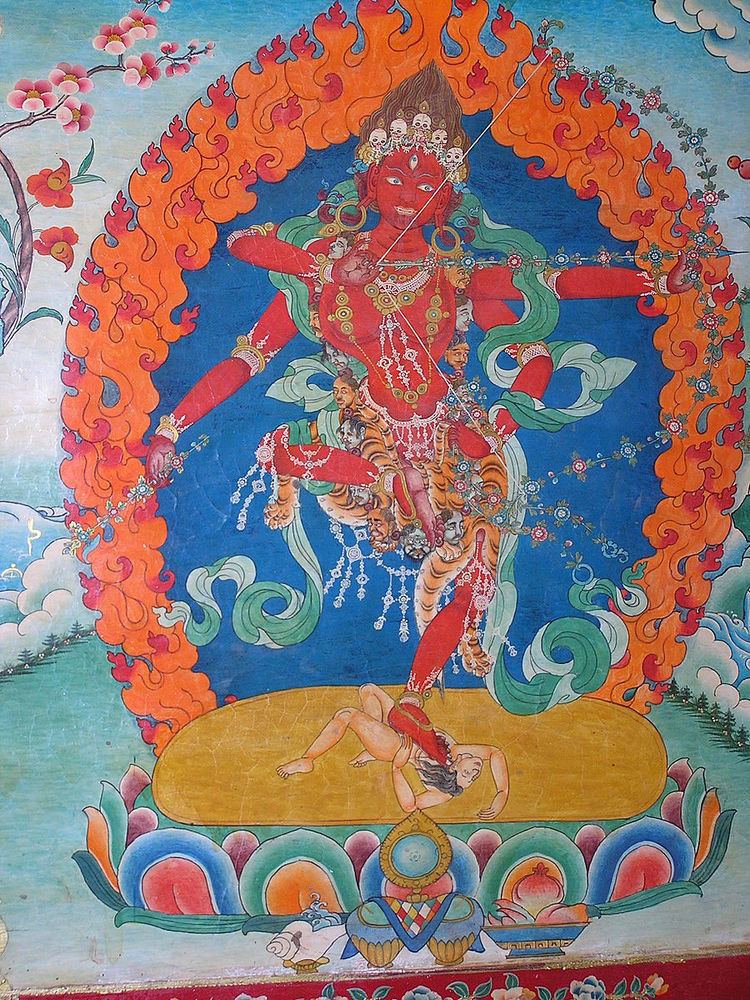 | ||
Kurukullā (Tibetan: ཀུ་རུ་ཀུ་ལླཱ་; also Tibetan: རིག་བྱེད་མ་, Wylie: rig byed ma "Knowledge/magic/vidyā Woman", Chinese: 咕嚕咕列佛母 "Mother-Buddha Kuru[kullā]" or Chinese: 作明佛母 "Knowledge-Causing Mother-Buddha") is a female, peaceful to semi-wrathful Yidam in Tibetan Buddhism particularly associated with rites of magnetization or enchantment. Her Sanskrit name is of unclear origin.
Contents
Representation
Kurukullā is a goddess whose body is usually depicted in red with four arms, holding a bow and arrow made of flowers in one pair of hands and a hook and noose of flowers in the other pair. She dances in a Dakini-pose and crushes the asura Rahu (the one who devours the sun). According to Hindu astrology, Rahu is a snake with a demon head (Navagraha) who represents the ascending lunar node.
She is considered either an emanation of Amitābha, one of Tara's forms, or a transformation of Heruka.
History
Kurukullā was likely an Indian tribal deity associated with magical domination. She was assimilated into the Buddhist pantheon at least as early as the Hevajra Tantra, which contains her mantra. Her function in Tibetan Buddhism is the "red" function of subjugation. Her root tantra is the Arya-tara-kurukulle-kalpa (Practices of the Noble Tara Kurukullā). It was translated by Ts'ütr'im jeya, a disciple of Atiśa.
Mantra
The essential mantra of Kurukullā is Oṁ Kurukulle Hrīḥ Svāhā (Tibetan: ༀ་ཀུ་རུ་ཀུ་ལླེ་ཧྲཱིཿསྭཱ་ཧཱ). This mantra uses the vocative form (Kurukulle) of her name.
